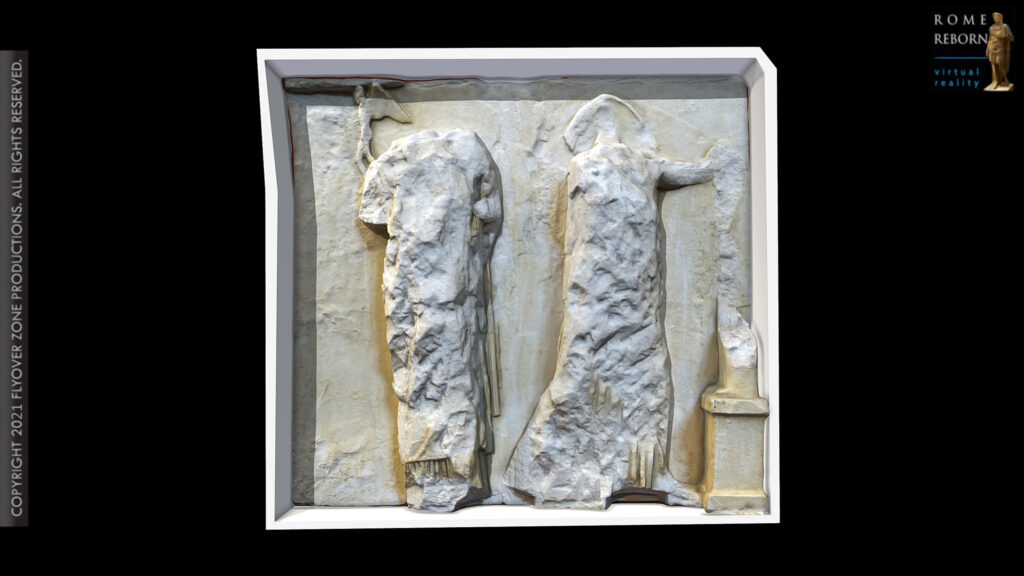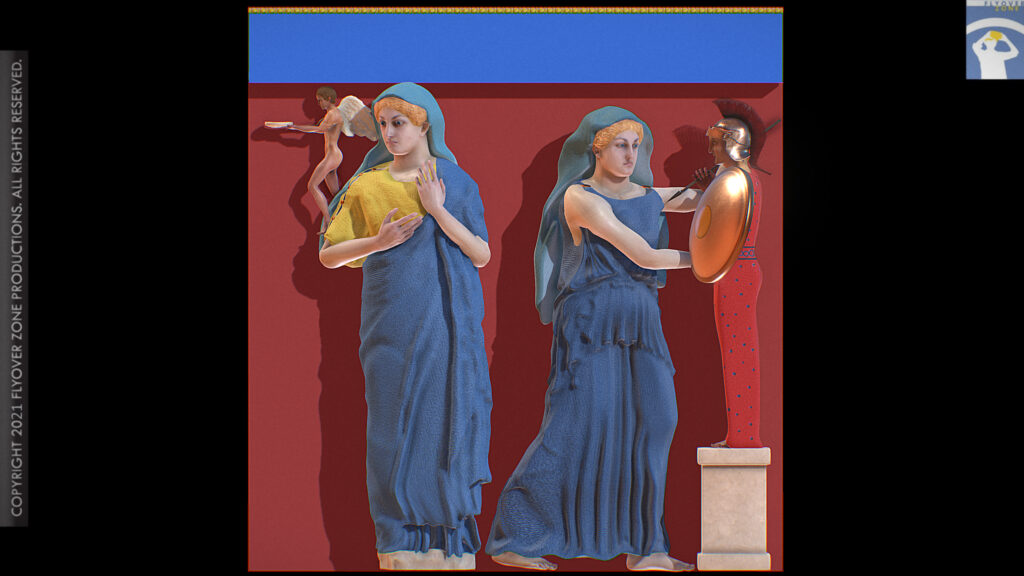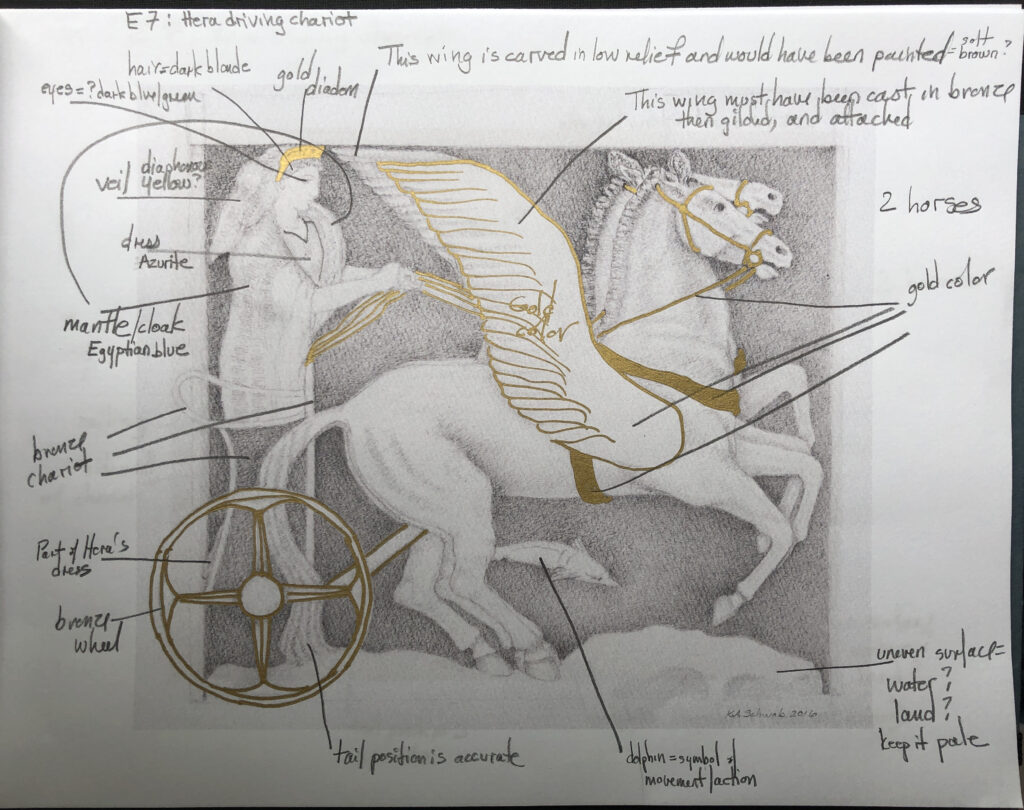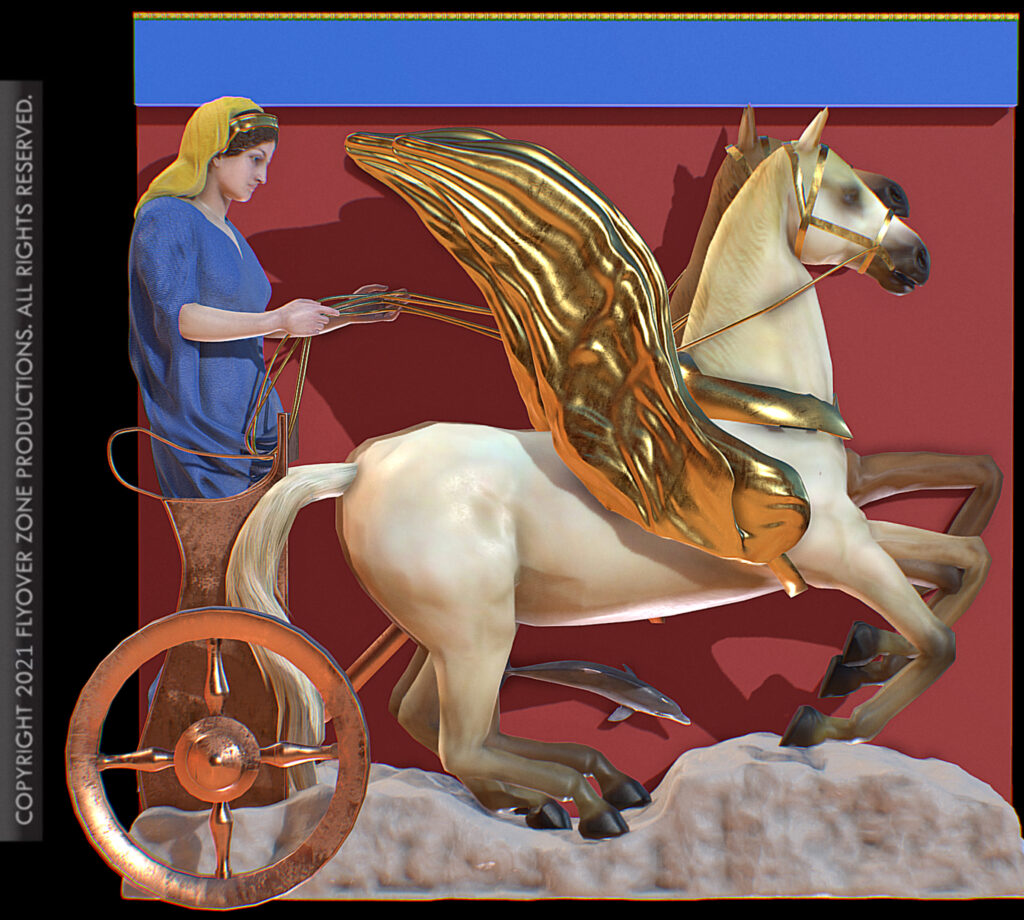Bernard Frischer: Please tell us about yourself. What did you study in college and graduate school, and where? What position do you now hold?
Prof. Katherine Schwab: At Scripps College I opted to pursue an individually designed major in Ancient Greek Civilization and was most fortunate to study my entire junior year in Athens at the College Year in Athens program. Taking classes on location with professors who knew the monuments intimately was a memorable experience. In graduate school, (M.A. Southern Methodist University, Ph.D. Institute of Fine Arts/NYU) I focused on Art History specializing in Ancient Greek Art and Archaeology. This led to my career at Fairfield University where I am Professor of Art History & Visual Culture, and Curator of the Plaster Cast Collection. We have one hundred historic plaster casts, mostly from the Metropolitan Museum of Art as long-term loans or gifts, but also gifts from Athens, the Yale University Art Gallery, the Slater Museum, and individual donors. The greatest number of our casts represent sculpture from the Parthenon and we have one of the largest collections of Parthenon examples in the greater NYC metropolitan area.
Plaster casts have always been a formative part of my research, and not surprisingly, my initial foray into this area involved numerous trips to Basel to study the Parthenon casts belonging to the Skulpturhalle.
Right: 3D rendering of N25 by Flyover’s Mohamed Abdelaziz.
B: You are considered one of the world’s leading authorities (indeed, the leading authority) on the Parthenon metopes. How did you get interested in this topic and how long have you been working on it?
K: My focus on the Parthenon metopes began with my dissertation where I was comparing Greek vase painting to Parthenon sculpture. I began with the metopes and discovered a substantial number vases associated with the sculpture by theme, composition, and iconography. The work evolved with my long study of examining each metope starting with the east and north, both series were intentionally badly damaged since the 6th century CE. Most scholars gravitate to the thirty-two south metopes, fifteen of which are in the British Museum and one in the Louvre. Several other south metopes remain in Athens. Not only are they better preserved, but the 17th c drawings usually attributed to Jacques Carrey provide a good idea of the general compositions for the entire series. Carrey did not draw the other three sides of the metope program, no doubt due to their very damaged state.
My work includes digital photography, drawing what I see, constantly looking for a visual vocabulary from elsewhere in the Parthenon sculptural program, and trying to make sense of breaks on the surface and bits of surviving carved contour. More recently my work has shifted to making proposed reconstruction drawings and hypothetical polychromatic renderings using the app Procreate on my iPad.
Many superb scholars have worked on the metopes, particularly the south series where there is more to see and plenty to debate as far as the theme of the central south metopes. Patient looking and trying to see the surviving evidence on the surface of the marble panel guide my efforts with the other sides of the building.
B: The condition of the individual metopes varies considerably from fairly well preserved to entirely missing, with everything possible in between. Apart from the missing metopes, can you generalize about the sources of information and methods you have used to visualize how the metopes appeared when newly finished?
K: In general, we need to rely on several sources, from firsthand examination or close looking, comparing photographs taken at different times in both black and white and in color, enhancements through digital photography to see closely and look for subtle changes on the surface, comparison with related compositions within the Parthenon sculptural program as a whole, and vase painting for composition and iconography.
Importantly, I have found drawing to be crucial in the process or method. By drawing not only do you have to slow down, but you also discover puzzling features and need to explain them. My drawings of the surface, made with a specific artist’s mechanical pencil, offer a precision to what is present. Using the mechanical pencil in this way stems from taking Tibetan thangka painting lessons in the western Himalayas, but that is another story! Once I begin developing the reconstruction composition, essentially creating something out of nothing, my evidence is steadily covered up. Currently, I am testing the appearance of polychromy through the app Procreate while trying to avoid a flatness to the figures, after all, they are carved deeply and project outward from the background plane.
B: Flyover Zone is very grateful that you accepted the invitation to collaborate with our amazing Art Director Mohamed Abdelaziz on a 3D restoration of the metopes. I know this is still a work-in-progress, but what can you tell us about your experience working with Mohamed? We’d also like to know (if it’s not too early) what you think will be the impact on scholars and the general public of the 3D polychrome restorations available that you and Mohamed are making for our virtual tour of the Acropolis?
K: Working with Mohamed Abdelaziz has been fascinating! He is realizing a 3D rendering of what I have been attempting to understand in a 2D world. We have quickly found a good working method that includes notations I make on a print of my reconstruction drawings. This helps him a great deal and I have been fascinated by his resulting images. Mohamed may not know this, but his work has helped me think about the metope panels in a new way. The virtual tour of the Acropolis and these 3D polychromatic renderings will help the general public understand the ancient Acropolis as a vibrant and colorful environment where human engagement was continually changing what we would have seen in antiquity. The ancient world was one of color, and this alone is already a big surprise to many people today. As our technologies rapidly improve and change, we can see more and more within or on the surviving image.The virtual tour will help the general public see that the current state evolved from a very different appearance. Having such a resource for the classroom will be tremendously helpful and I look forward to sharing the virtual tour with my students.















